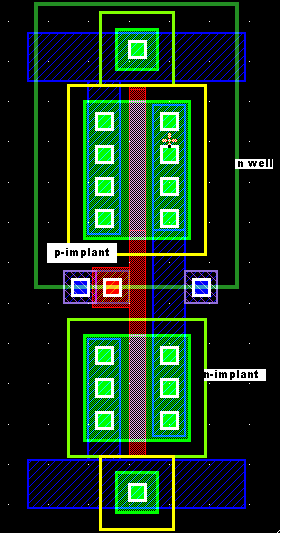ebuddy
Full Member level 3

Basic MOS FET question
Hi,
I am looking at the layout of a typical N MOS FET. It has a poly on top of N-Diff region. See my attachment 1.
What I don't understand is that N Diffusion under gate (poly). Intuitively, there should not be any N-diffusion under the gate (see attachment 2), because N channel is formed only when a positive Vgs is applied. Now we have N diffusion already placed under the gate, which means the N channel is already formed. Does it make sense? - I am confused.
Could anyone help me to understand this? Thanks.
Hi,
I am looking at the layout of a typical N MOS FET. It has a poly on top of N-Diff region. See my attachment 1.
What I don't understand is that N Diffusion under gate (poly). Intuitively, there should not be any N-diffusion under the gate (see attachment 2), because N channel is formed only when a positive Vgs is applied. Now we have N diffusion already placed under the gate, which means the N channel is already formed. Does it make sense? - I am confused.
Could anyone help me to understand this? Thanks.



